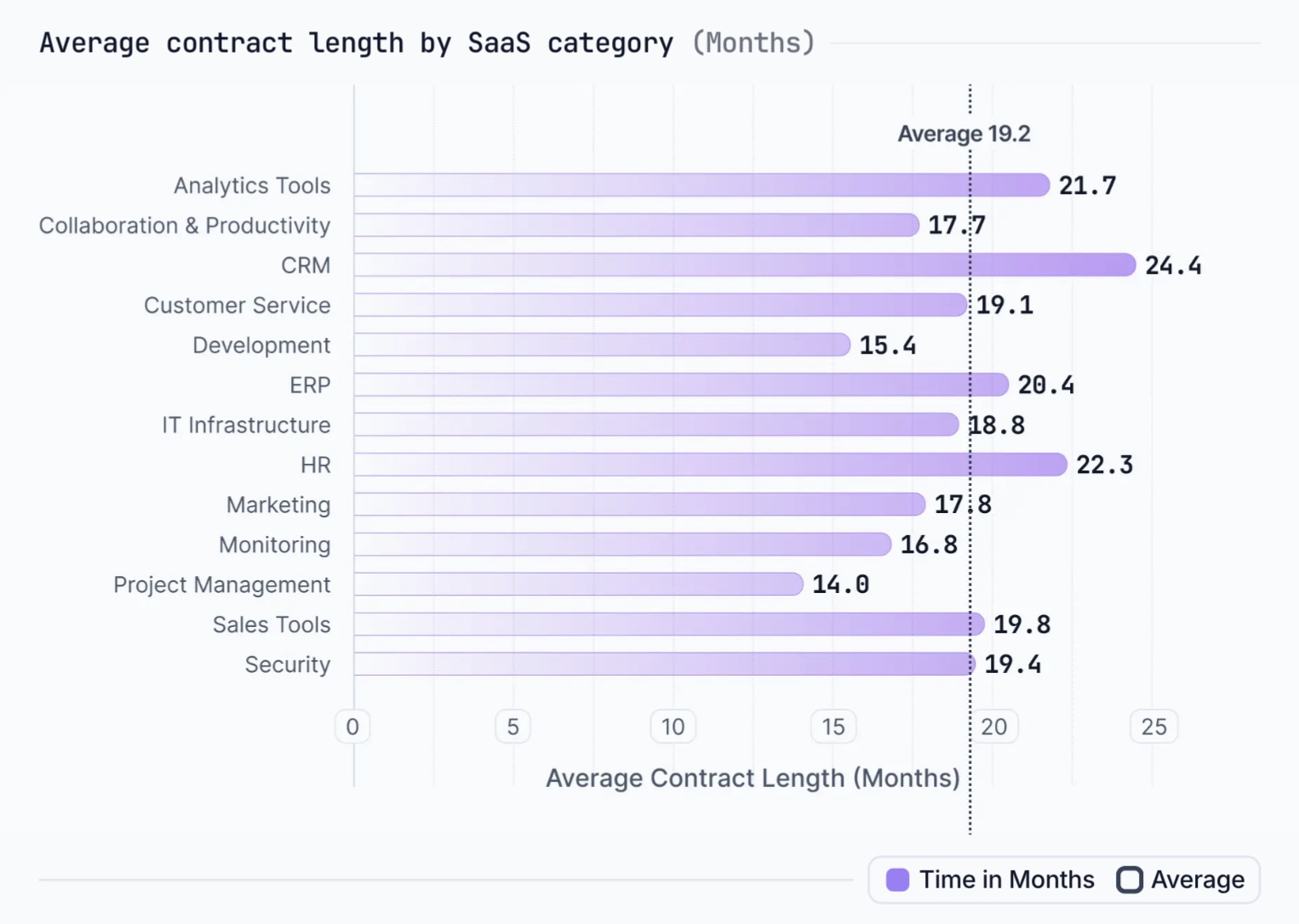



Take a self-guided tour of the platform.
Stop wasting budget on unused and underutilized SaaS
See why Vertice is trusted by top procurement leaders.
See exactly how much companies like yours are wasting on average – and what can be done to eliminate preventable spend.



When purchasing or renewing SaaS, one of the biggest considerations you’ll need to make is whether to subscribe to the software on a monthly basis, or whether to commit to a longer-term plan – typically an annual subscription –– in a bid to shave anywhere from 20 to 30 percent off the listed price.
But with software prices continuing to rise, fueled largely by soaring SaaS inflation rates and economic uncertainty, more organizations are opting for multi-year deals on their SaaS tools, as a way to further optimize their SaaS spend.
So, what sort of savings can you expect compared to the usual annual discounts? How do you decide which kind of contract renewal schedule is the best fit for your business? And what else should you be considering before committing for the long-haul?
What is a multi-year contract?
A multi-year SaaS contract is a commitment made by an organization to subscribe to a SaaS product for a specified period of two or more years. These contracts typically see companies “locked-in” at a set cost, in exchange for a discounted price point or other favorable contract terms.
But while multi-year deals can span two or more years, our data show that the average SaaS contract length is just 1.5 years – indicating that many businesses still lean toward shorter-term flexibility.
However, contract length does often vary by software category, with business-critical platforms such as CRMs far more likely to carry longer commitments than average.

This suggests that most organizations still prefer shorter-term flexibility — making multi-year commitments a notable departure from the norm. As a result, choosing a longer contract should be approached with a clear understanding of both the risks and the long-term benefits.
Multi-year contracts vs annual contracts
Organizations have long seen the advantages of committing to an annual plan, but how does a multi-year subscription compare?
While there are a number of advantages to committing to a longer-term SaaS contract, there are also considerations you should be factoring in to ensure it’s the best choice for your business.
Benefits of a multi-year agreement
If you’re considering a multi-year contract, you’ve probably been enticed by the incentives that vendors offer to secure repeat custom, including:
- More lucrative discounts
If you're wondering if there are any discounts for long-term commitments, the answer is often yes — vendors often reward multi-year subscriptions with increased discounts to secure repeat business.
While annual discounts typically range between 20-30%, our data shows that vendors usually add around 5% more discount for each additional year you commit. For example, if a vendor offers a 20% discount for a one-year contract, they might increase it to 25% for two years and 30% for three years.
Additionally, even deeper discounts are often available if you pay upfront for the entire contract term. However, it’s important to weigh these savings against the financial impact of a larger upfront payment.
- Protection from price uplifts
Software prices typically increase each year, with vendors raising costs by an average of 7%. While there are strategies to mitigate the impact of these price hikes, many organizations remain vulnerable without proactive contract negotiations and clear terms that limit future increases.
Committing to a multi-year contract can help lock in pricing and provide greater protection against annual increases, giving your business more predictable budgeting and cost control over the long term.
- Time savings
One of the largest draws of a multi-year contract is practicality. With a longer subscription, there’s no need to renew the plan each year, which can be a time-consuming process for procurement, finance, and IT teams. Researching alternatives, gathering staff feedback, and negotiating the best deal can make renewals lengthy and complex. Often, businesses end up simply renewing their existing plan to avoid the hassle.
By locking in a multi-year contract, you eliminate the need to revisit this process annually, freeing up valuable time and resources. This also reduces the stress and administrative burden associated with frequent renewals, allowing teams to focus on other priorities.
Using a SaaS procurement software platform can further streamline this process by automating renewals and tracking contracts efficiently.
Things to consider when choosing the length of a SaaS contract
While multi-year plans offer several benefits, they aren’t the right choice for every SaaS application in your portfolio. It’s crucial to carefully evaluate each contract to avoid locking yourself into a long-term commitment that may not deliver a positive return on investment.
Is the tool right for your business?
Commit only if you’re confident the software will meet your long-term needs.
Is the contract future-proof?
Before committing to a multi-year SaaS contract, ensure the terms offer enough flexibility to adapt to your business’s changing needs. Key negotiable elements to watch include auto-renewal clauses, price increase limits, and exit or break clauses. Removing or modifying these can help you avoid vendor lock-in and unexpected costs.
As an example, if you anticipate user growth over the next year, negotiate pricing bands or tiered user allowances upfront to lock in costs for additional users without needing a new contract. This proactive approach ensures your contract remains aligned with your evolving business.
Get the best deal on any contract with these 20+ SaaS negotiation levers
Check the contract terms carefully
When evaluating a SaaS contract – especially for multi-year commitments – it’s essential to review key terms closely to avoid surprises down the line:
- Support and Termination Policies: Understand the level of customer support included and your rights to terminate the contract early. Look for any penalties or fees tied to early cancellation or underperformance.
- Usage Rights: Confirm who can access the software and under what conditions. Check if user limits or feature access can be adjusted as your needs change.
- Billing Schedule: Pay attention to whether you’ll be billed monthly, annually, or upfront for the entire multi-year term. While upfront payments often secure better discounts, they can significantly impact your cash flow.
- Financial Planning: Make sure the billing terms align with your company’s budgeting and cash management strategies. Negotiating flexible payment schedules can help maintain healthy cash flow without sacrificing discounts.
By thoroughly vetting these contract terms, you’ll protect your business from unexpected costs and ensure the agreement supports your operational and financial goals.
Avoiding waste: Don't let multi-year deals become money traps
Multi-year SaaS contracts can unlock serious savings – but only if the tools remain actively used.
Without ongoing visibility into adoption and usage, organizations risk paying for underutilized or entirely unused software – also referred to as shelfware. In fact, our own data shows that as many as 66% of applications are either underused or not used at all, underscoring the scale of inefficiency that can undermine even the best-negotiated deals.
To protect your investments, pair long-term commitments with disciplined SaaS contract management to ensure every license delivers value and nothing goes to waste.
.webp)
















